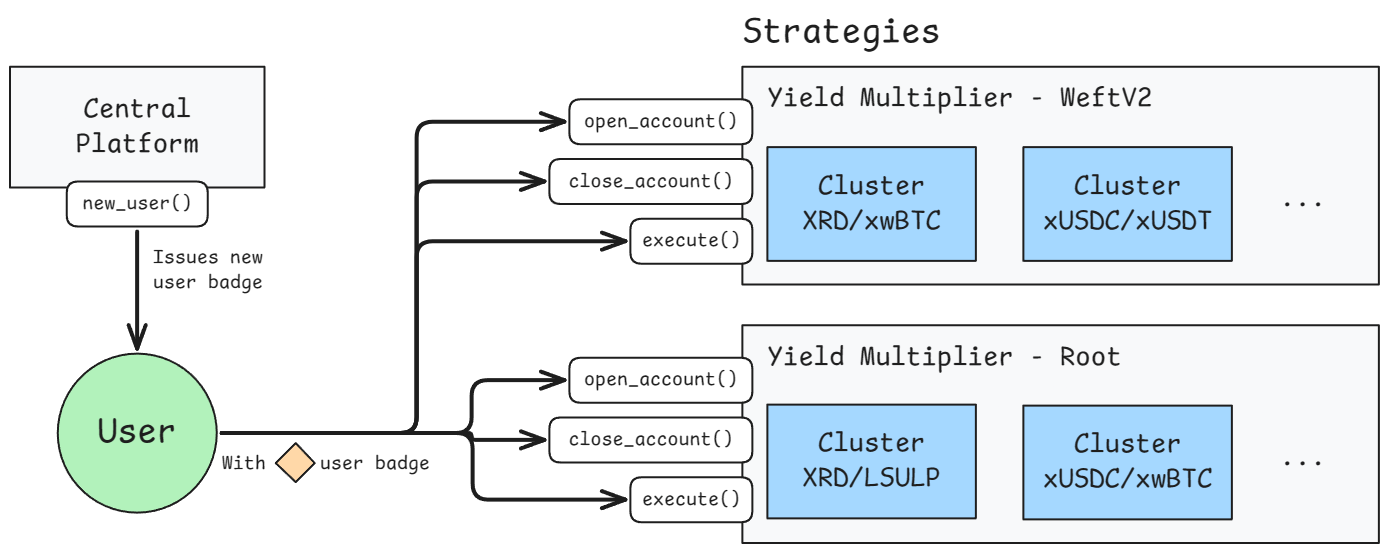How it works

Platform Component
The platform component serves as a hub for everything user and cluster related: it is in charge of issuing & updating user badges, and linking & unlinking clusters. User badges were covered here so they will not be covered again, but linking requires a bit of explanation.
When a cluster is instantiated, it is not connected to the platform component by default, meaning that it cannot access features which require authorization from the platform— e.g. opening an account. This authorization is provided in the form of a link badge, which is issued by the platform to a specific cluster component— not an entire strategy or package —and is used to the cluster to call specific methods on the platform. If this badge is revoked, the cluster will again be restricted in its operations; this is reserved as an mechanism for if something goes catastrophically wrong, and the disabling the specific service in the cluster fails.
Clusters
Clusters are instantiated to ‘fit’ a specific platform component, meaning that only that specific platform will be able to link to the cluster. Likewise, the cluster generally inherits the owner and admin roles of the platform, but that, alongside any cluster-specific parameters are passed in as arguments to the instantiation method. All account-related data is stored within the cluster itself, as each strategy requires its own specific information, and can be accessed exclusively by the user badge with ownership over that data.